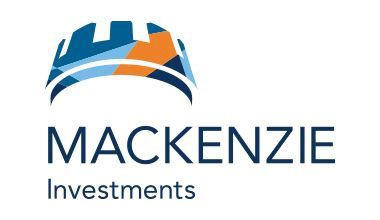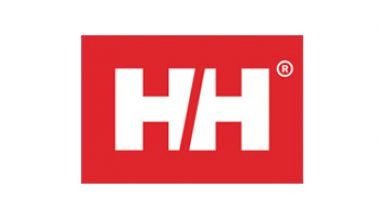Train to Race
BUILD THE SKI RACER & OPTIMIZE THE ENGINE
In the Train to Race stage, ski racers have made a serious commitment to the pursuit of their goals in ski racing. Ski racers should come into this stage with a solid physical fitness and physical literacy foundation with which to build upon. Strength training will become more formalized and lead to the development of power. Programming follows a periodized training plan tailored for the individual ski racer and focuses to maintain a balance between on-snow and off-snow training requirements.
- Boys After adolescent growth period
- Girls After adolescent growth period
- Dependent on skiing skills & fitness
- Club through Provincial Team Level
Cardiorespiratory
Aerobic training remains a priority!
In the sport of ski racing, a good aerobic endurance base is required to maintain high levels of skill execution run after run in training and competition.
- Continue to make aerobic training a priority through participation in endurance events at slower speeds.
- Maintain speed, agility and coordination sessions with intervals of 5 to 20 seconds in duration, fartlek type training
- Move into high-intensity anaerobic training for the development of anaerobic power and capacity with intervals of 30 to 120 seconds in duration towards the end of this stage.
SKI RACERS SHOULD AIM TO ACHIEVE 180 MINUTES OF ACTIVITY PER DAY, WITH 60 MINUTES SPENT ON COMPLETING SOME VIGOROUS PHYSICAL ACTIVITY. EVERY SKI RACER SHOULD ENGAGE IN PHYSICAL ACTIVITY FOR THE MAXIMUM AMOUNT OF TIME EACH DAY.
BOTH AEROBIC AND STRENGTH TRAINABILITY DEPEND ON THE MATURATION LEVEL OF THE SKIER.
Strength & Conditioning
The maintenance of multilateral development will continue at the beginning of this stage and transition to favour ski specific training regimens. The training plans for ski racers are adjusted to meet individual needs and requirements.
Caution!
Some ski racers entering this stage may still be experiencing their peak height velocity (PHV). It's important to ensure that the ski racer is past their PHV before starting to develop strength and power. After the ski racer has passed their peak height velocity, they can begin formal strength, power and plyometric training.
Coaches working with ski racers in Train to Race stage should have formal educational training in strength and conditioning or they should work with a strength and conditioning professional to complete the following program requirements.- Ski racers should focus on training strength and core stability, power, aerobic and anaerobic endurance, agility, balance, coordination (motor skills), proprioception (position sense/balance) and mobility.
- Ski racers will significantly benefit from the use of free weights, medicine balls, dumbbells, kettlebells, and resistance bands.
- Training the neuromuscular system in an unbalanced environment is required to strengthen the core musculature and the ski racers ability to stabilize their core and hip/pelvis region.
- Strength training will target the whole body while also targeting the legs, core, and hips/glutes.
- Include formalized plyometric training including box jumps, acceleration and deceleration drill work.
- Adjustments to training plans for injured or return to snow racers occurs in collaboration with a sports medicine professional.
Formalized Olympic weightlifting movement training should be introduced using little to no weight at the beginning of this stage to ensure proper technique, motor control and coordination is refined first before asking the ski racer to perform lifts with heavier loads. As ski racers transition from the start of this stage to the end of this stage, they transition from building strength to the development of power through the use of heavier weights while performing Olympic lifts.
Strength building exercises should always include simple movement patterns performed with correct technique:
- Squatting movement: include the introduction of body weight double leg squat progressing to single leg squat progressively increasing the range of motion.
- Hinge movement: starts at the hip by touching the toes with fingers or hands in both a sitting and standing position.
- Lunging movement: start with simple forward lunges onto one leg progressing to stepping back into a lunge followed by learning to lunge laterally; progress into lunging jumps with proper technique.
- Pushing actions: learn how to push up properly, push against the wall and floor, push a med ball away from the body and overhead, push against the ground and jump into the air. Push off the snow and ice using a skating motion.
- Pulling actions: learn how to pull yourself up and to perform a chin up or pull up, pull an object toward the body, play tug of war, learn to row.
- Carrying movements: carry items from one place to another with the weight close the body, progressing to moving the weight on one side or the other progressing towards carrying weight further away from the body to cause the body to be out of balance.
Ski racers should not progress beyond their level of motor skill competency and proficiency. Performing all the exercises mentioned above with correct technique is the best way to make strength gains safely. REINFORCING PROPER TECHNIQUE DURING THESE MOVEMENTS MAY REDUCE NONIMPACT INJURY RATES.
FEMALE SKI RACERS:
Programs focusing on preseason conditioning, functional training, balance, core stability, education and sport-specific skills are effective in reducing injury rates (Harber, 2007).- Functional training and resistance training should be regular components of programs for females (Harber, 2007).
- Rapid physical changes are occurring, coaches should be aware of and address any changes in movement patterns, agility, balance and coordination.
- Coaches and female athletes should be familiar with the high-risk movements associated with ACL and Patellofemoral joint injuries during deceleration combined with a cut/change in direction, or when landing from a jump.
- Preventing injury in female ski racers requires proper instruction in the correct ways to execute lower-body and shoulder movements. The appropriate technique to prevent anterior cruciate ligament and patellofemoral joint injury can be introduced to athletes and reinforced by coaches (Harber, 2007).
MOVEMENT PREPARATION
Every ski racer should complete an activation (warm-up) and proper movement preparation series before starting any training activity, and it should become part of the normal routine. An appropriate session of activation can last between 5 - 15 minutes dependent on the upcoming training session. An activation session can be a lower intensity version of the workout you are about to do, or it can contain individual-specific movement preparation exercises for the ski racer. It should always involve the muscles you are about to use. Movement preparation can also be completed as part of a regeneration session.A proper activation session before beginning training or competition will:
- Increase the heart and respiration rate causing an increase in available oxygen for the working muscles (gradual increase).
- Increase muscle and body temperature, required for training and competing in cold weather.
- Increase range of motion and mobility.
- Dial in the mind-body connection optimizing the ability to perform; engages the nervous system.
Including fundamental movement skills in the activation session will:
- Promote the maintenance of physical literacy.
- Enables ski racers to strengthen their body using simple movement patterns.
- Allows ski racers to adequately prepare the body for movement and improve or correct their movement patterns which can reduce the risk of injury while skiing and participating in unfamiliar activities.
- Promote a feeling of success by acquiring skills resulting in an increased motivation to overcome challenges because they have prepared the body and mind for training or competition.
Review the Physical Literacy Movement Prep Interactive PDF from physicalliteracy.ca to review proper movement prep exercise execution.
Physical Training for Para-Alpine
Much like the development of a long term plan for skiing, the same must be looked at for the physical aspect of a participant or athlete. For the Para-Athlete we must make certain considerations based on the physical impairment of the individual. It is necessary to realize that due to the nature of differences between each athlete’s needs, every aspect of the program will be considered on an individual basis. Training does not differ from an able-bodied regimen, however extra considerations should be taken into account for each category.
VISUALLY IMPAIRED
Goals: develop proprioceptive awareness and balance to increase confidence in spatial moving, if possible, increase chemistry and communication with a guide.
Considerations:
- Not usually any physical restrictions, no modifications on testing procedures.
- Need to educate and progress through bodyweight movements to movements with external objects and object manipulation.
- Landing and jumping progressions can help to build spatial awareness, which can increase balance and coordination.
- Outdoor conditioning workouts will most often require a guide with experience.
SITTING
Goals: Develop and improve sitting positioning, balance, core strength, scapular, rotator cuff and potentially hip stabilizers.
Considerations:
SAFETY: GAIN AWARENESS OF THEIR ASIA (AMERICAN SPINAL INJURY ASSOCIATION) STATUS AND LESION LEVEL. GAIN A CLEAR UNDERSTANDING OF THEIR CURRENT FUNCTION (BOTH SENSATION AND MOTOR) PRIOR TO STARTING A PROGRAM.
- Orthostatic hypertension: gradually change positions.
- Autonomic dysreflexia (T6 and above): ensure they have used the washroom prior to their workouts and there are no bladder infections, restrictive clothes or other potentially noxious stimuli present.
- Respiratory function: do they need an assisted cough.
- Caution with overtraining as this will affect their ability to carry out activities of daily living.
- May need more help than normal with the movement of themselves and equipment around the weight room or training area
- Be aware of areas without feeling and rubbing, pressure points during certain movements.
STANDING
Goals: Address muscular imbalances that may occur. Engage and encourage proper movement patterns, but understand that they may not be perfect.
SAFETY: IF WORKING WITH AN AMPUTEE, ENSURE THAT SKIN CARE IS MANAGED, PARTICULARLY IF TRAINING IN A HOT ENVIRONMENT.
- Understand the differences in the range of motion, strength and optimal positioning with each athlete.
- All of the facets of training (strength, power, agility, etc.) can be trained, however, they all may look different between athletes and possibly within an athlete (i.e. left and right sides).
- Some athletes (eg. Cerebral Palsy or stroke) may need different movements for each side of their body, don’t neglect the less functioning side.
IT IS IMPERATIVE THAT THE COACHING STAFF AND INTEGRATED SUPPORT STAFF (IST) COMMUNICATE AND ARE AWARE OF EACH ATHLETE’S FUNCTIONAL STATUS, TECHNICAL LEVELS AND ABILITIES. THIS WILL ALLOW FOR BETTER FLOW AND ALIGNMENT OF PHYSICAL, TACTICAL, MENTAL AND TECHNICAL DEVELOPMENT TO CREATE THE BEST POSSIBLE ENVIRONMENT FOR MAXIMAL OVERALL GROWTH.
REFERENCES:
Bompa, T. and Carrera, M. (2015). Conditioning Young Athletes. Human Kinetics. 2015.
Faigenbaum, Avery D., Westcott, Wayne L.. Youth Strength Training Programs: Human Kinetics. 2009.
Harber, V. (2007). The Female Athlete Perspective: Coach/Parent/Administrator Guide. Victoria, BC: Canadian Sport Centres. Retrieved from http://sportforlife.ca/wp-content/uploads/2016/11/The-Female-Athlete-Perspective-1.pdf
Istvan Balyi, Richard Way, Colin Higgs. Long Term Athlete Development. Human Kinetics. 2013.


